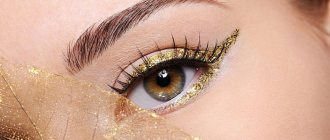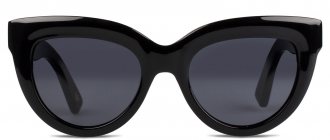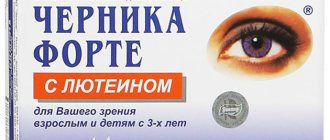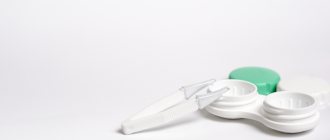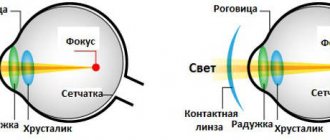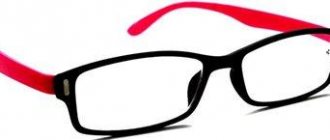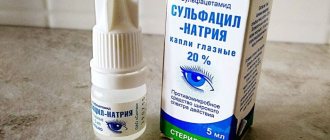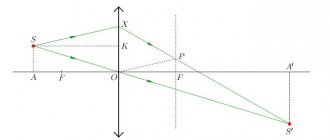How does the shade of light affect a person?
There is no direct connection between the color of lamps and eye health. This means that, trying to maintain normal visual acuity, you don’t have to worry about what shade of light to choose for your office or living room.
Nevertheless, color temperature indirectly affects the health of the inhabitants of the room, affecting mood and general psycho-emotional state.
- Cold glow tones, increases concentration, dispels drowsiness, and is therefore recommended for illuminating work areas.
- The warm tone of light is characterized by the opposite properties: it relaxes, soothes, creates an atmosphere of comfort and coziness.
The human eye is capable of detecting changes in color temperature in the widest range – 800–20,000 K.
Selecting a light source
To find out what shade of light a regular or energy-saving light bulb emits, look at the color temperature of the product, which is printed on the packaging.
The temperature of light is measured in Kelvin (K). A yellow glow is produced by a light bulb with a lower value of this value. And at a high color temperature, the light from the device will be cold and slightly bluish.
The most common lamps with the following shades of light:
- Cool white, which corresponds to values from 5400 to 5000 K.
- Natural (neutral) white with a temperature of 3500 to 5000 K.
- Warm white with a range of values from 2700 to 3500 K.
The differences between light at different temperatures are shown in the photo.
Cold spectrum light
The glow in the cold temperature range is close in perception to the eye to the light of the sun in the winter season. It is ideal for work areas of an apartment or office. Cold light lamps:
- looks brighter;
- stimulates mental activity;
- helps you concentrate and get ready for work;
- suitable for work spaces with combined lighting - artificial and natural.
Note! Cold glow distorts the color scheme of objects painted in warm colors. Orange will appear brownish, yellow will appear green, red will appear purple. At the same time, the green and blue palette becomes brighter and deeper.
You also need to take into account that the final color of the lighting depends on the color of the lampshade and the bulb of the device.
Lamps with high color temperatures will find application:
- In the washbasin area in the bathroom. The cold glow invigorates and stimulates brain activity, promoting a speedy awakening.
- In the kitchen area. Spot lighting is used here to help the housewife increase organization and productivity.
- In large rooms with ultra-modern design.
- In work areas and offices to increase concentration and mental alertness.
You should not use lamps with a cold glow in bedrooms and living rooms, where apartment residents relax in the evening. Scientists have found that bluish light slows down the production of melatonin, a hormone that is responsible for biorhythms and healthy sleep.
LED white light
LED bulbs can produce daytime white light that is as close as possible to midday sunlight on a cloudless summer day. And many sellers and buyers of LED lamps are sure that this is the best light for the eyes. Only this is not true at all. And first of all, the harm of white LED lighting was noticed by the users of such lamps themselves, stating that in the evenings the light turned on irritates the mucous membrane of the eyes to the point of tears, causing fatigue and noticeable discomfort.
A study of the lighting parameters produced by “white” LED devices showed that they have a pronounced emission band in the blue-blue range with a wavelength of about 450 nanometers. In the human body exposed to this short-wavelength cold white light in the evening or early morning, the production of melatonin sharply slows down. Meanwhile, this pineal gland hormone affects many body functions, regulates biorhythms, slows down the aging process and supports the immune system. Moreover, studies have proven that white LED light in the blue-blue range is very harmful to the retina of the eye, and after working for a long time in such lighting, it begins to degrade. It turns out that cold white lighting from LED devices, used in the morning and evening, is the most harmful to human health.
Neutral white lighting
Neutral electric lighting is optimal for rooms where you have to stay for a long time. Certain types of fluorescent and halogen lamps allow you to achieve a glow close to that of the sun. This backlight does not affect the tones of surrounding objects, so there is no fear of color distortion when it is turned on.
Neutral light is recommended to be used:
- Above mirrors to see the most accurate reflection without distorted colors.
- In corridors and hallways for quick adaptation of vision after street light.
- In a child's room where a natural tone of lighting is desired.
- In kitchens and dining rooms, where owners spend a lot of time.
- In places intended for reading.
What happens when blue light enters your eyes?
Our visual organs are capable of detecting light waves only in a very small range - from 380 to 780 nanometers. The blue spectrum waves are the shortest and range from 380 to 500 nm. As a result of prolonged exposure to blue light in the eyes, there is an increased production of free radicals. They accumulate in the macula and destroy the receptors responsible for the quality of vision. It is the excessive influence of blue light that scientists call one of the causes of age-related macular degeneration. This pathology, in turn, is one of the main causes of blindness, since there is no cure for it.
Warm spectrum lighting
Light with a temperature of 3500–2700 K has a cozy, warming yellowish tint that is well perceived by the eyes. Such a glow is subconsciously associated with the morning or evening sun.
Both traditional incandescent lamps and halogen lamps can emit the yellow-tinged light we are used to. Fluorescent illuminators and LED devices with a low color temperature are also produced.
Light in the warm range enhances the color saturation of objects made in a pastel palette. Interior designers actively use this feature to create unique images. Details of cold tones with such lighting will become less expressive.
Important! Due to the absence of rays of the appropriate spectrum, cold colors under a yellow glow look distorted. Blue approaches green, blue turns black, violet turns red.
Yellowish warm light would be appropriate:
- In the canteens. During meals, such lighting will make dishes more attractive and promote good digestion.
- In bedrooms to create coziness and a calm atmosphere.
- In the living rooms. Warm lighting will add ease and lightness to the atmosphere and relieve psychological stress for guests and apartment owners. A diffuser chandelier in this room will be the ideal solution.
- In the bathroom, in the bathtub area, for relaxation and creating a sense of tranquility necessary to relax and get the maximum benefit from relaxing water treatments.
Rules for the use and organization of lighting
Cold and warm lighting affect not only the perception of colors, but also a person’s well-being. Below we consider the features of the impact:
- warm tones soothe in the evening, gently awaken in the morning: they produce a soft, non-oppressive effect, create comfort;
- a neutral shade of light imitates daylight, promotes stimulation of the central nervous system and brain activity;
- Blue light bulbs are most similar to the glow of the moon, so if used incorrectly they can cause depression and apathy.
Based on the effect on mood and surrounding objects, we draw conclusions on the use of lighting devices:
- Warm light in the interior is necessary to create a cozy atmosphere: suitable as additional lighting for relaxation in the living room, pendants over the dining table, sconce or floor lamp in the reading corner, lighting in the bedroom, children's room in the evenings before bed.
- Cold light in the room is invigorating only in small quantities, so a table lamp on the desk or lighting in the shower in the morning is enough to concentrate. It is not recommended to use fluorescent lamps with blue undertones as the main scenario in any room.
- Neutral lighting devices are called natural for a reason: they most accurately imitate the usual daylight, which is why experts recommend white lamps for most people as the main sources.
The last nuance in choosing the temperature is a design one. Some light shades are literally associated with a particular interior style, and therefore deserve special attention.
- All vintage, palace, classic and retro styles gravitate towards temperatures up to 4500K (warm light). The main reason is the visual resemblance to the fire of a candle or kerosene stove, which were used at the birth of these trends.
- Cold light is appropriate in ultra-modern interiors: minimalism, hi-tech. In combination with glossy surfaces, an abundance of glass and metal, LEDs set the right mood. Cold bluish lighting in the apartment creates a slightly hospital atmosphere, so you shouldn’t overdo it.
But going to extremes is not always right. Taking into account the peculiarities of the influence of each range, it is best to choose the most suitable light bulbs for each scenario in all rooms, which will make rest more comfortable and work more productive. For example, the main white light in the living room can be replaced by additional warm light, intended for cozy family gatherings.
Extra options
In addition to the color temperature of the lighting device, other characteristics of the lamps are also important. There are several main criteria that need to be taken into account when choosing:
- Operating principle. There are incandescent, halogen, LED and fluorescent lamps.
- Efficiency. In the first place in this parameter are LED devices.
- Flask device. It can have the shape of a ball, tube, mushroom, pear, spot.
- Price. Incandescent lamps will cost less. LED ones are more expensive than others, but the one-time overpayment will pay off over time with lower power consumption.
- Color rendering index. Indicated on the device packaging by the letters Ra. If it is equal to or exceeds 90, then the colors of the interior when illuminated by this product will remain natural, as in daylight. At a value of 80 and below, be prepared for distortion of the usual colors.
It cannot be said that a certain light tone - cold or warm - is better or worse. Each of them affects a person in a certain way, so it is important that the color of the lighting matches the purpose of the room or functional area.
How lifestyle affects vision
There are a lot of factors that negatively affect the visual organs. But among them there are several main enemies of clear eyes and sharp gaze.
Computer and gadgets
Many people, after spending a working day at the office at the computer, sit down to relax in front of the TV at home. Another option: continue working, playing or chatting on social networks – again behind the monitor screen. Or they settle down on the sofa with a tablet (smartphone, e-reader, etc.) And teenagers and young people often do not look away from their mobile phone displays even on public transport. A killer pastime for the eyes! Negativity “works” in several directions at once:
- Staring at the monitor screen makes you blink less often. Since it is blinking that distributes tear fluid over the surface of the eye, the cornea does not receive the necessary moisture, resulting in the development of “dry eye” syndrome.
- The gaze is fixed on one point, the eye muscles become overstrained and degrade, which is one of the causes of myopia.
- As a rule, with eyestrain, the eyes open wider than usual, and the harmful effects intensify.
- The eyes suffer from too bright lighting from monitor screens and gadgets.
Wrong reading
You can also ruin your eyes with a printed publication. It is best to read while sitting, with your back straight, in natural light, so that no shadows fall on the page. The text size must be at least 13-14. Every 45 minutes you need to take a break at least for a while. How often do you read this way? The question is rhetorical. Meanwhile, violation of these requirements leads not only to eye strain. When reading while lying down, astigmatism may develop due to the incorrect position of the eyes in relation to a book or magazine.
It should be noted that it is not only gadgets and reading that cause increased strain on vision. Overfatigue occurs when driving for a long time, especially in extreme conditions, while working with small parts, doing handicrafts, etc.
Ultra-violet rays
Sun, air and water are our best friends. But only if there is enough sun. A walk on a pleasant clear morning will supply the visual organs with vitamins and stimulate metabolic processes. And spending many hours on the beach without protective equipment will not benefit either the skin or the eyes. Prolonged intense ultraviolet radiation can lead to cataracts, retinal cell degradation and dry eyes. In this regard, not only summer but also winter sunny days are dangerous, when your eyes are exposed to rays reflected from the snow. High-quality sunglasses will help avoid this.
About tasty and unhealthy food
The most dangerous enemy of the visual organs is fast food, carbonated drinks and other products containing large amounts of saturated fat and sugar. They negatively affect blood vessels, and yet normal microcirculation of the blood vessels of the eyes is the most important condition for their health. Another disadvantage of such a “diet” is that the oculomotor muscles can become obese. It is impossible not to mention the almost complete absence of vitamins A, C and E and other nutrients necessary for the eyes, such as zinc, in these products. And the inevitable companion of unhealthy food - obesity - is a direct path to hypertension and damage to the blood vessels of the eyes.
Bad habits
It has been proven that smokers are at risk for cataracts and retinal diseases. In addition, this bad habit contributes to the degeneration of the visual muscles and optic nerve. It is a well-known fact that smoking has a detrimental effect on the circulatory system, and this brings us back to disorders of blood microcirculation in the organs of vision. Smoking also leads to a concentration of heavy metals in the structures of the eye and enhances oxidative processes in the eye cells. In addition, smoke in the room irritates the mucous membranes and leads to a decrease in air humidity, which can cause the development of dry eye syndrome.
Alcohol abuse also impairs the circulatory system and contributes to damage to the optic nerve.
Physical inactivity
A sedentary lifestyle, constant stay in enclosed spaces, especially with air-conditioned and dry air, negatively affects vision. In addition to the fact that modern city dwellers lack fresh air and physical activity, one more factor must be taken into account. When a person is in an open space, for example, outside the city, at a stadium, in the countryside, his gaze automatically switches from near objects to distant ones. And this is an excellent exercise for the visual organs. Not to mention the fact that during such walks the eyes simply rest.
How to minimize harm
As already noted, an unhealthy lifestyle provokes the occurrence of dry eye syndrome. This very common pathology today is associated with a decrease in the quantity and quality of production of the lacrimal glands, and increased evaporation of the tear film from the surface of the cornea. The tear film normally acts as a lubricant between the eye and eyelids, protects the cornea and conjunctiva from drying out and pathogenic microbes, and contains substances that nourish the organs of vision.
If the quality of the tear film is impaired, tear substitutes are used - “artificial tear” preparations that moisturize the surface of the cornea. They contain electrolytes and other substances that, in a number of indicators, bring artificial tears as close as possible to natural tears. However, drops and gels cannot completely replace the natural products of the lacrimal glands.
The innovative product Delfanto® in capsules will help solve this problem. It is very convenient to take and has virtually no contraindications, and meets international quality and safety standards. But the main advantage of Delfanto® is that this product not only moisturizes the eyes, its active components stimulate the production of your own tears and the restoration of the tear film.
By minimizing the influence of the negative factors discussed above and “feeding” your eyes with your own tears, you can largely neutralize the damage caused to your eyes.
